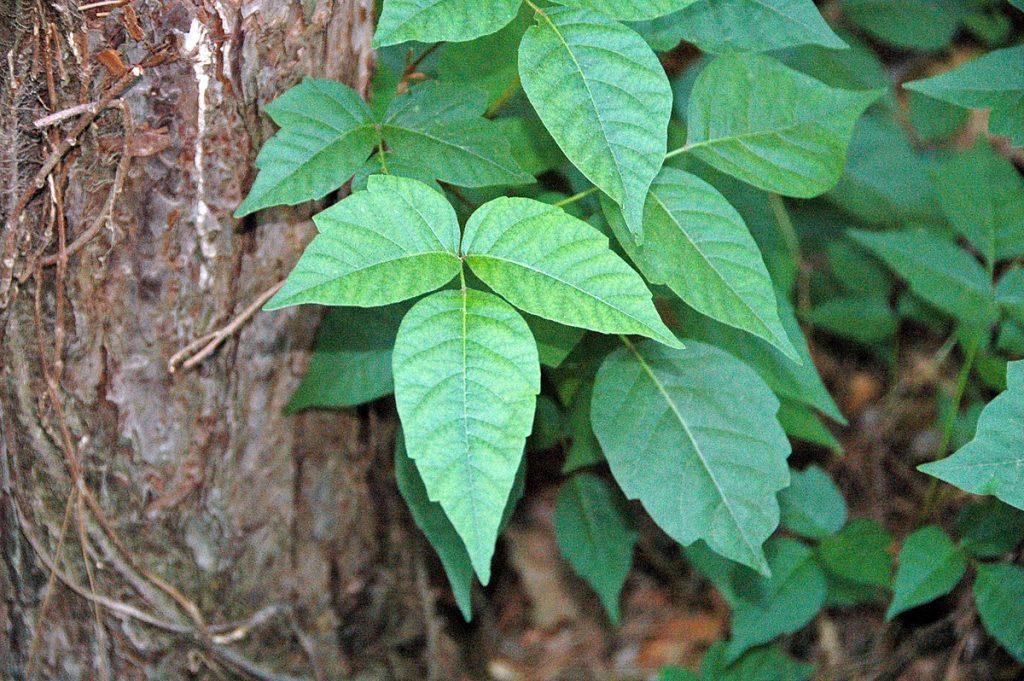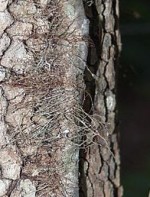
Poison ivy is a woody perennial shrub or climbing vine native to eastern, and mid-western United States where it grows well in shaded areas and is especially common along the edges of fields and woods but can also grow in the full sun of open fields. It is a member of the cashew family, Anacardiaceae, that also includes poison sumac, pistachio, and mango. Shrubs grow up to 6′ tall and may be trailing while vines grow 60-150′ long on the ground or climbing on trees or other structures by means of aerial rootlets. The stems are light reddish green when young but become dark brown, woody and usually hairy, with age. The compound leaves have three oval leaflets, the middle one longer than the other two. Each leaflet is 2-6″ long, pointed, and has toothed or smooth margins. When they first appear in early spring, the leaves are reddish but turn to shiny green as they mature, and to bright yellow or red in the fall. When the plant is about three years old, it may produce panicles of pale green flowers in the leaf axils, in spring. The panicles are up to 4″ long and each flower is about 1/4 ” across and has 5 triangular, recurved petals. The fruit is a gray to white, 1-seeded ovoid berry that is about 1/4″ wide and has a waxy surface. The fruits mature in the fall and are eaten by birds into winter. The plant sap contains urushiol that can cause inflammation and blistering of the skin but the plant provides browse, food and/or shelter for animals from insects to deer. The genus name, Toxicodendron, comes from the Greek words, τοξικός (toxikos), meaning poison, and δένδρον (dendron), meaning tree. The specific epithet, radicans, comes from the Latin rādīcō and means taking root. Photo Credit James St. John Wikimedia Commons

Type: Wood shrub or vine
Outstanding Feature: Poisonous properties; wildlife food and shelter
Form: Trailing shrub or climbing vine
Growth Rate: Rapid
Bloom: Panicles of small pale green flowers in spring
Size: Shrub up to 6′ H; vine up to 150′ H
Light: Full sun to part shade
Soil: Very tolerant of many soil types; fertile to lean, dry to moist, alkaline to acid
Hardiness: Zones 4-10
Care: Avoid contact or burning the plant due to poisonous properties; eliminate in areas where people are likely to be present.
Pests and Diseases: None of significance
Propagation: Seed
Photo Credit: Wikipedia